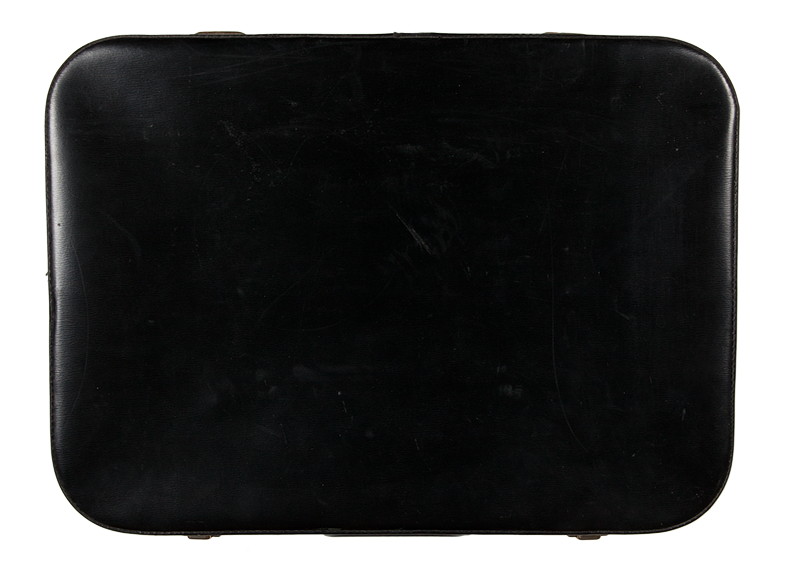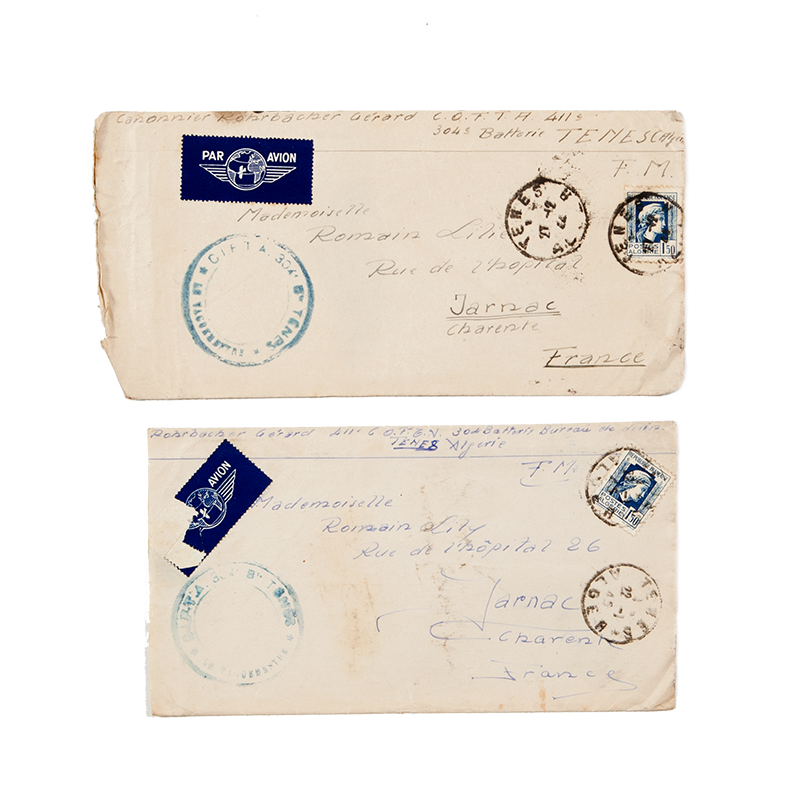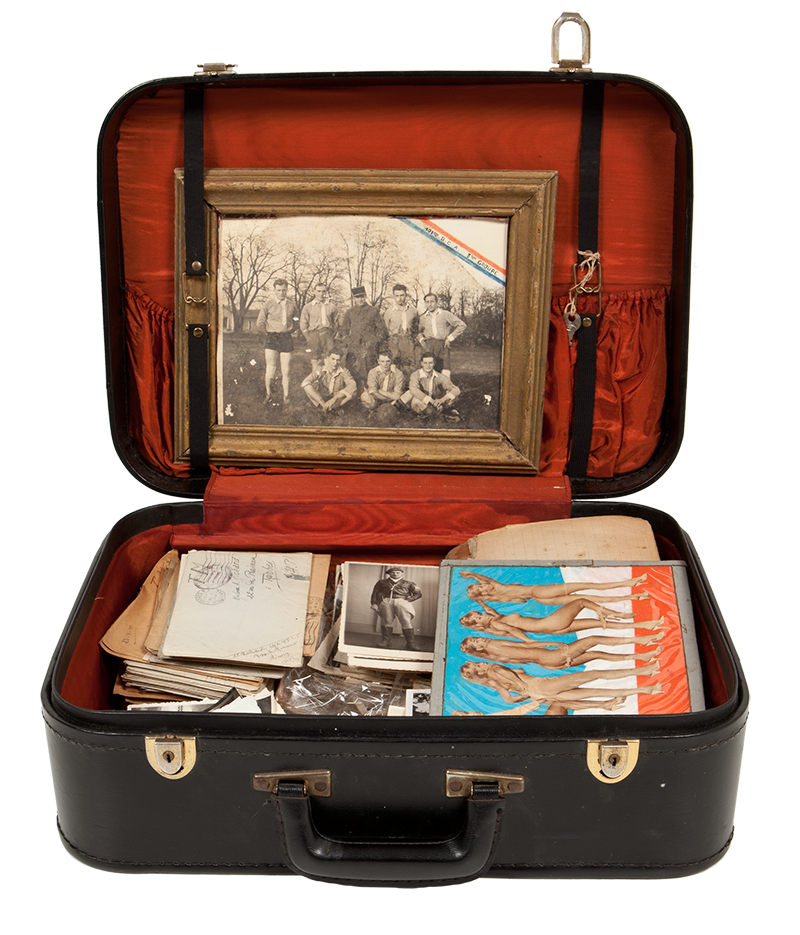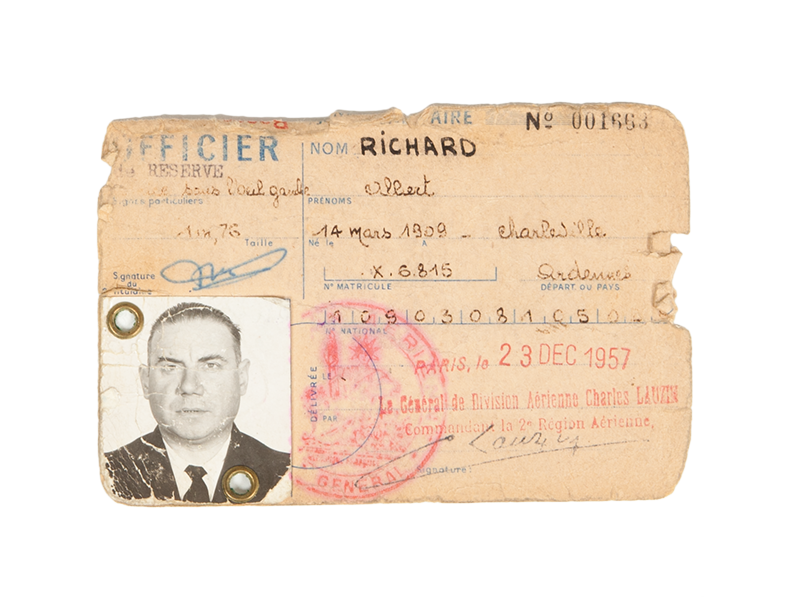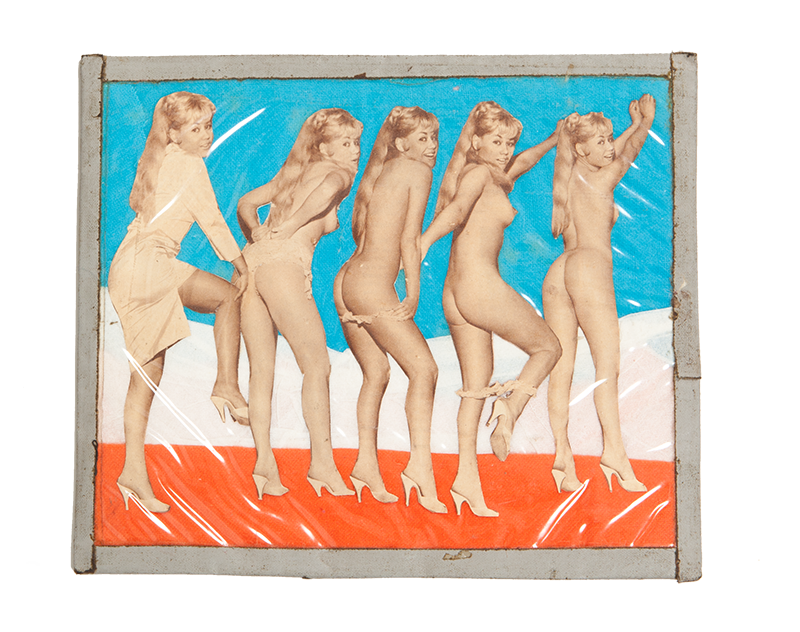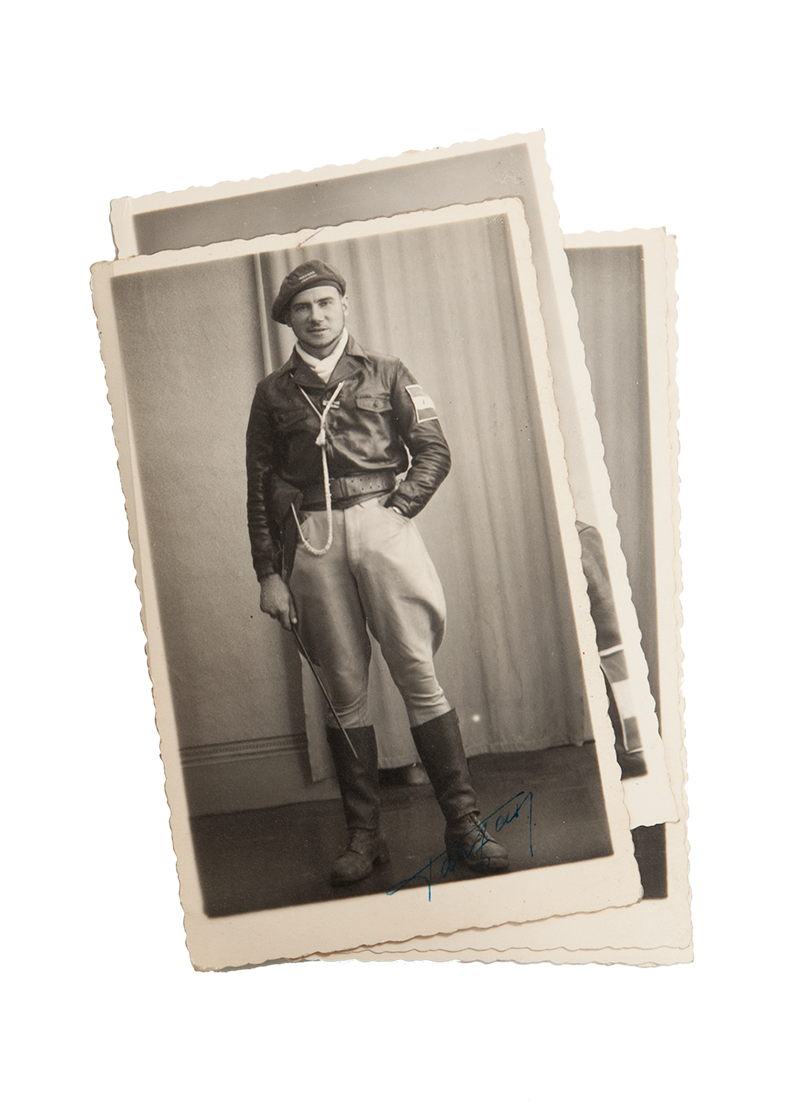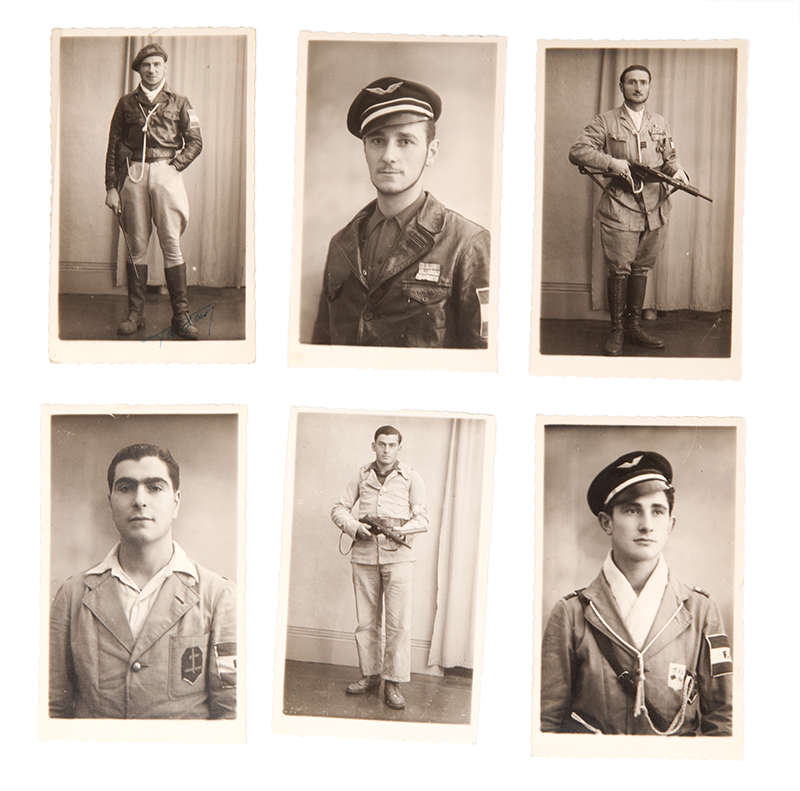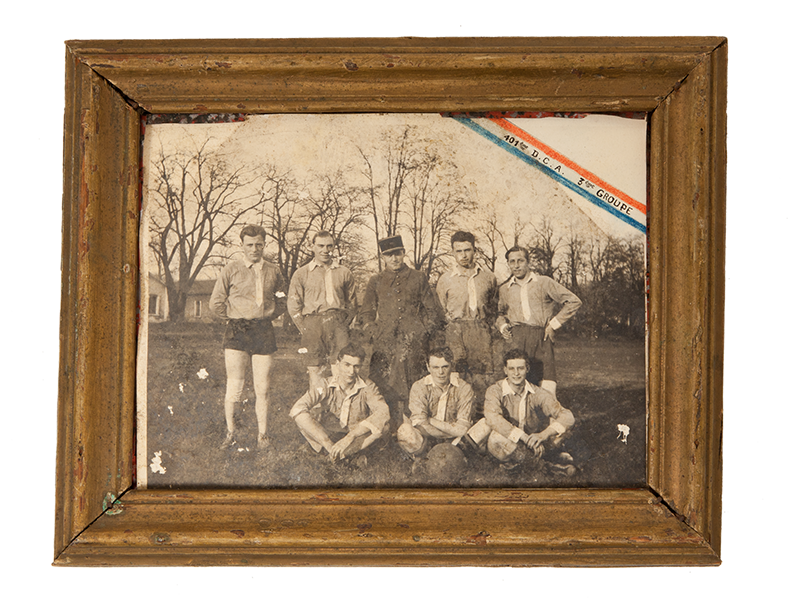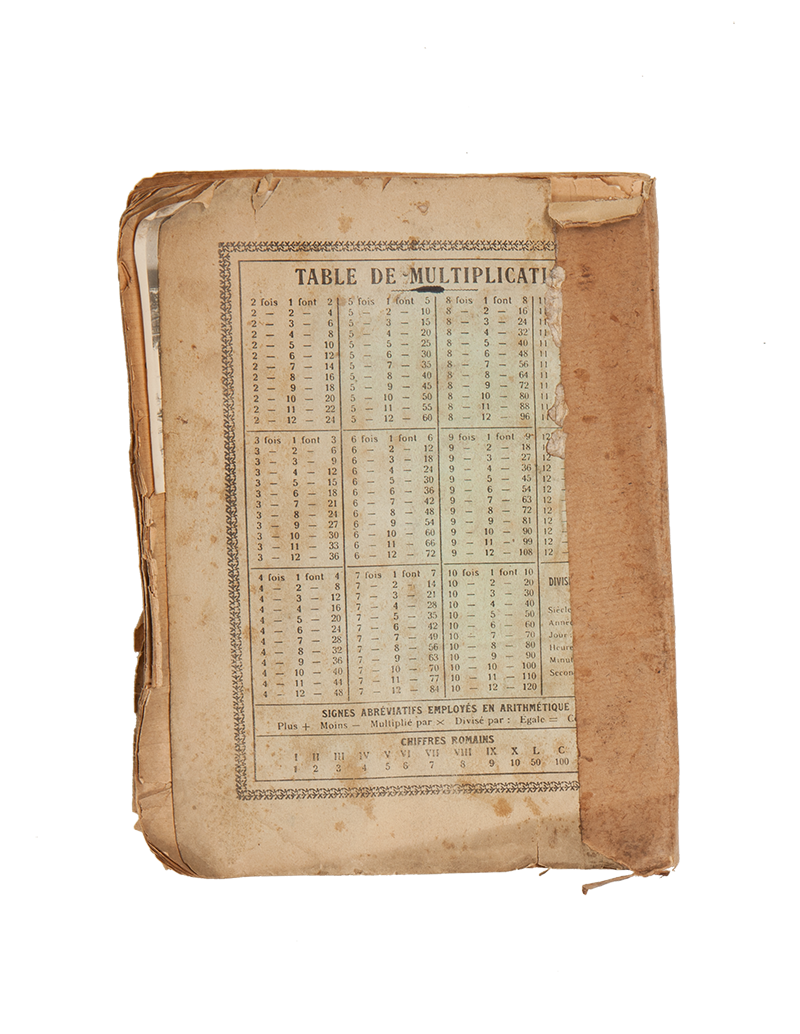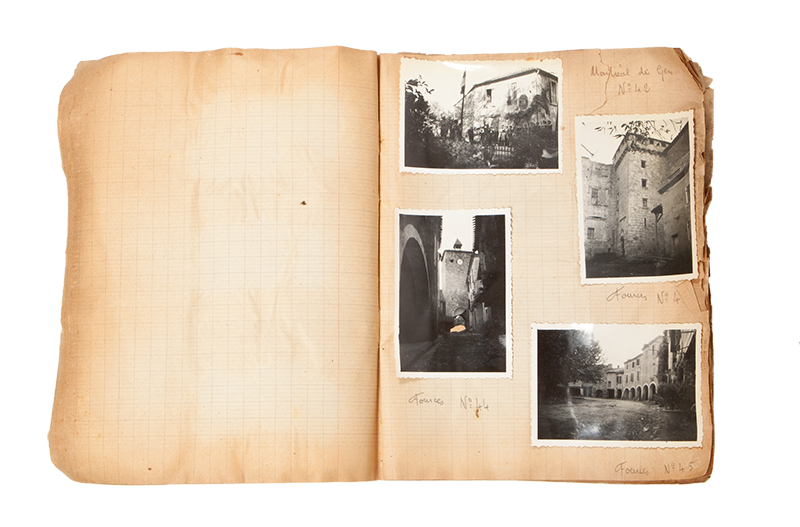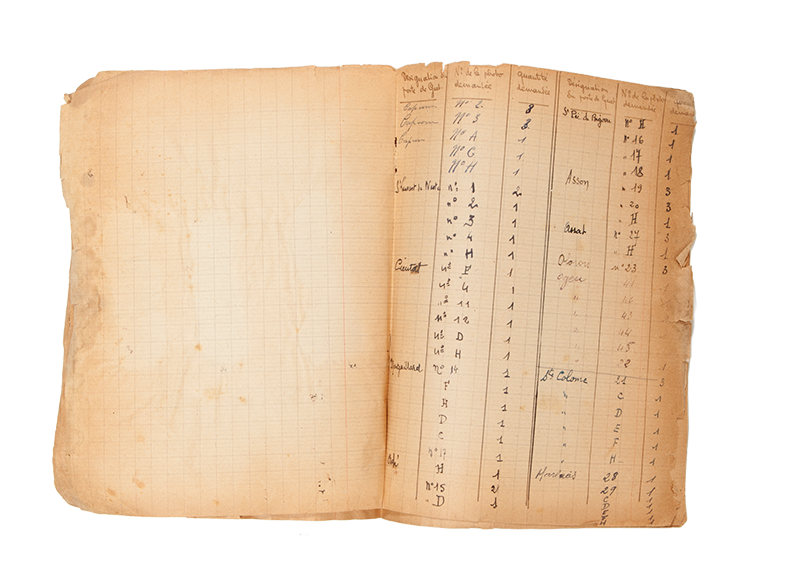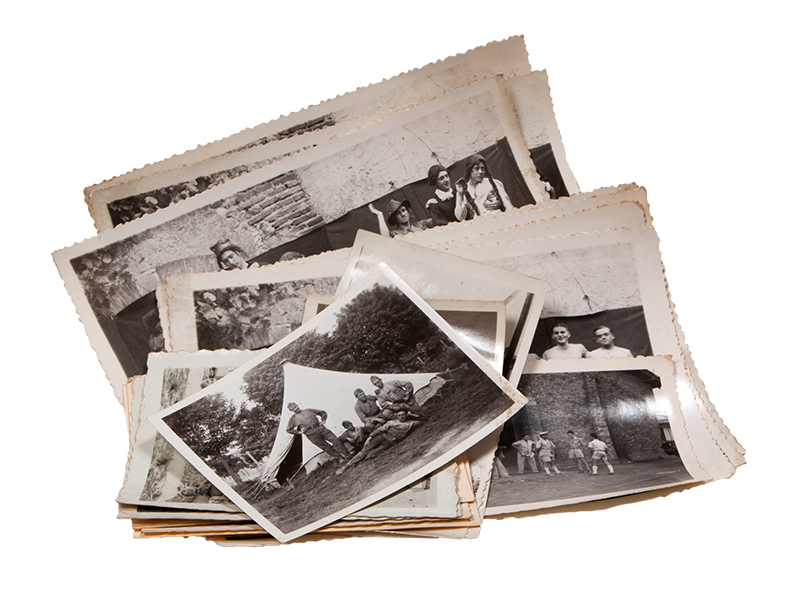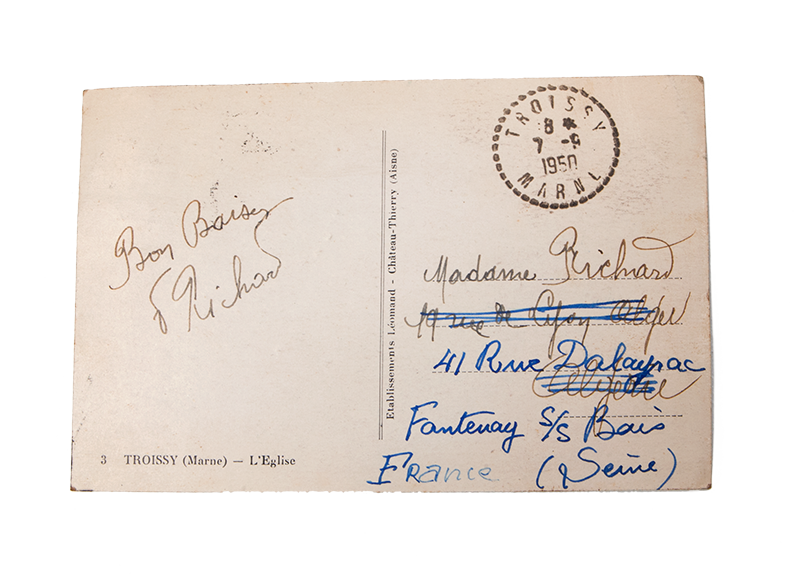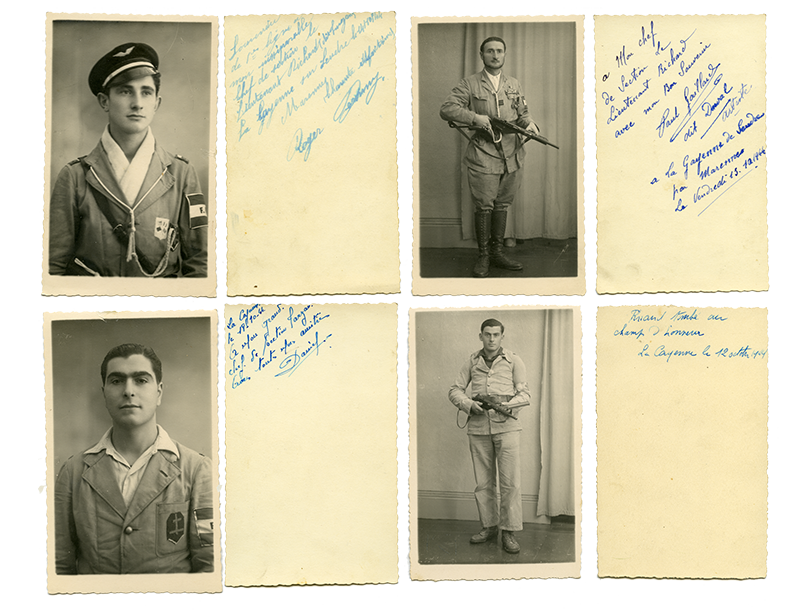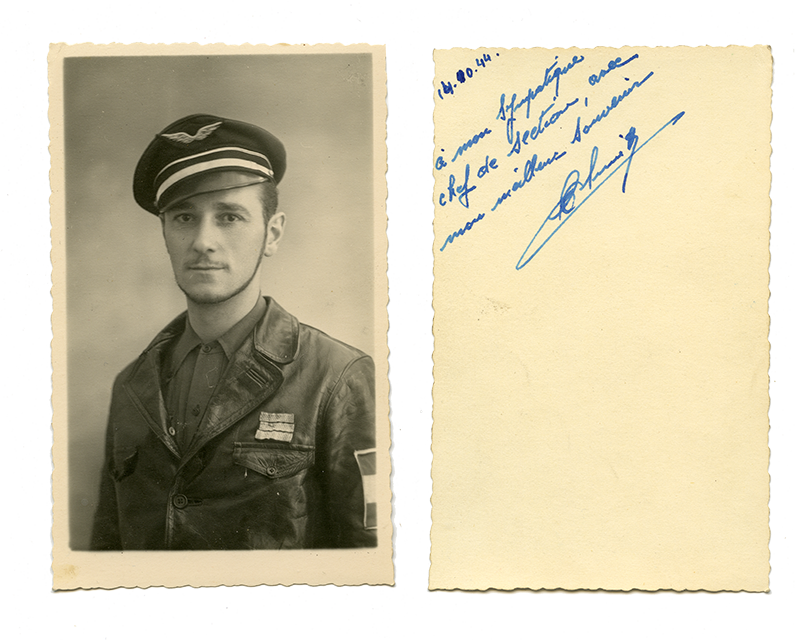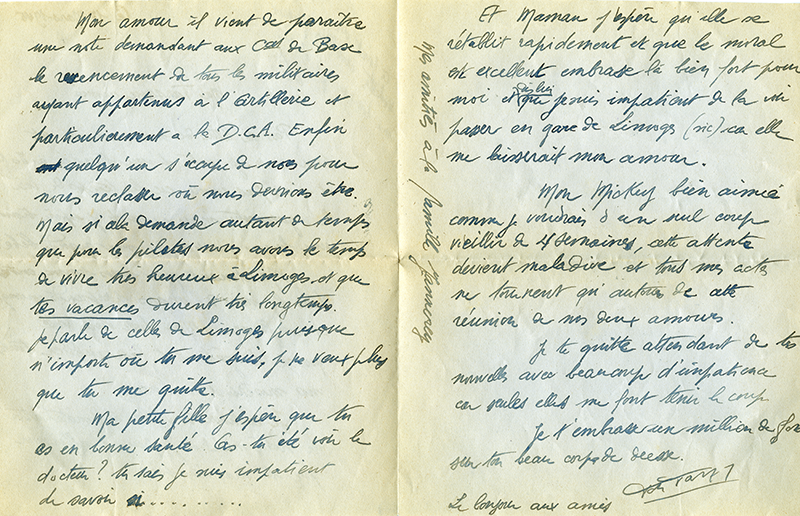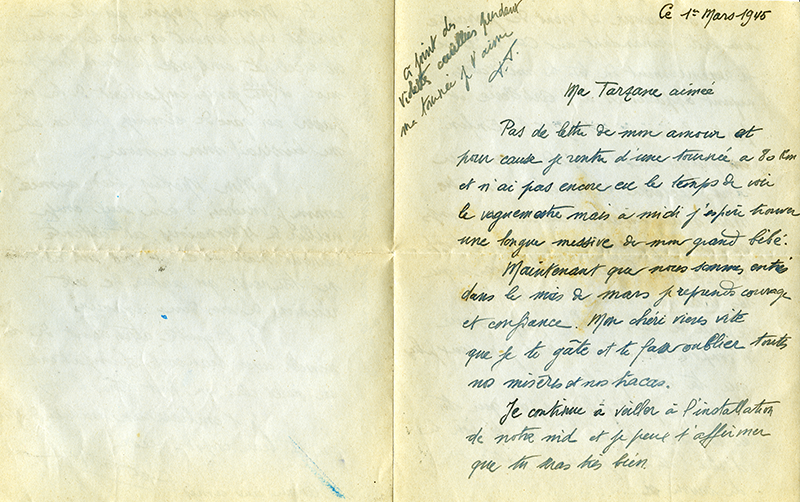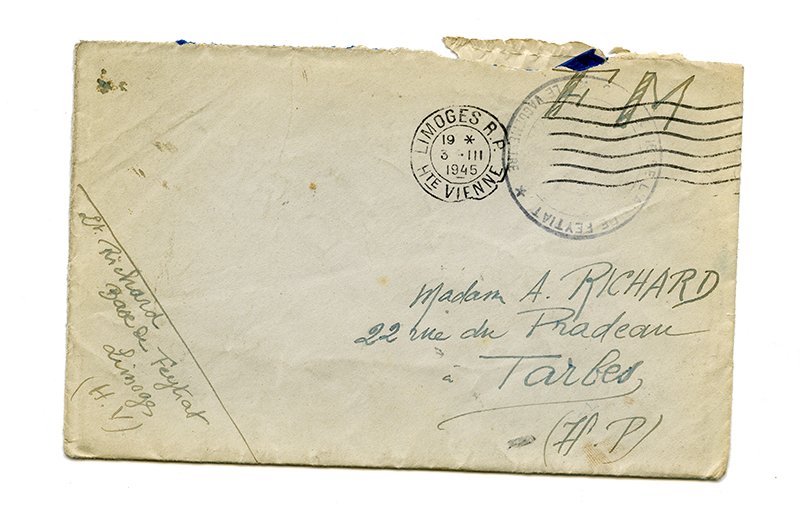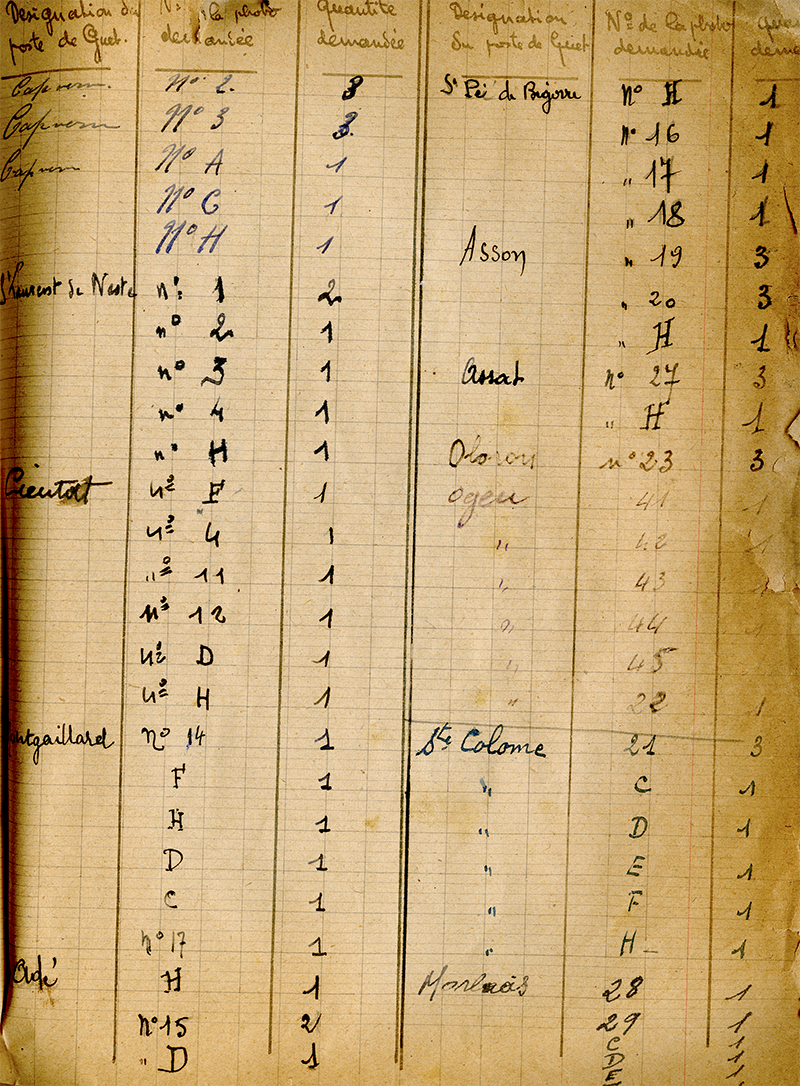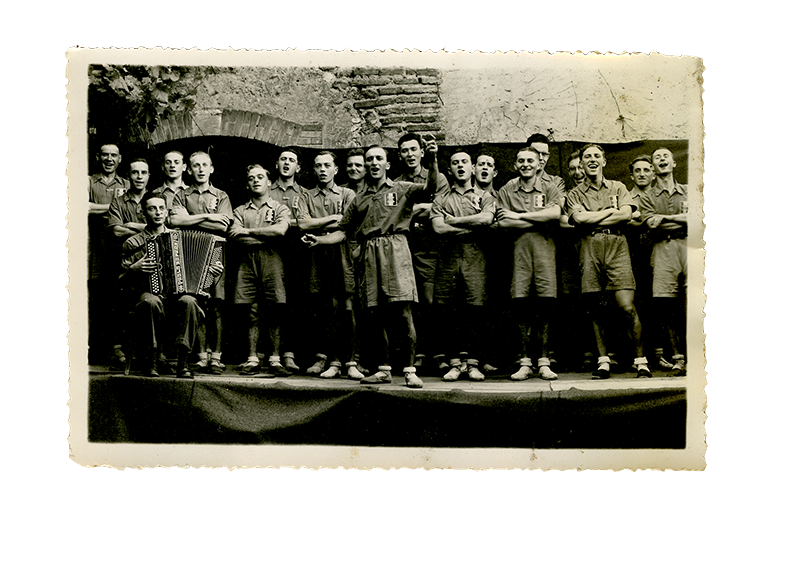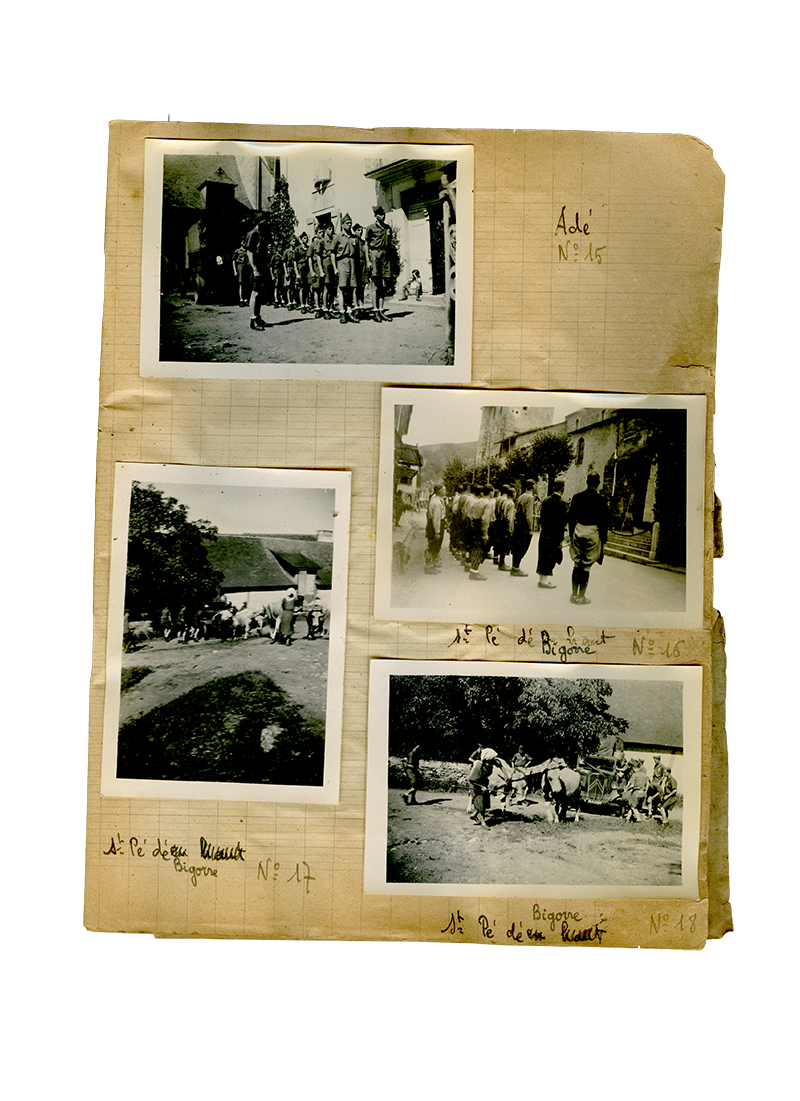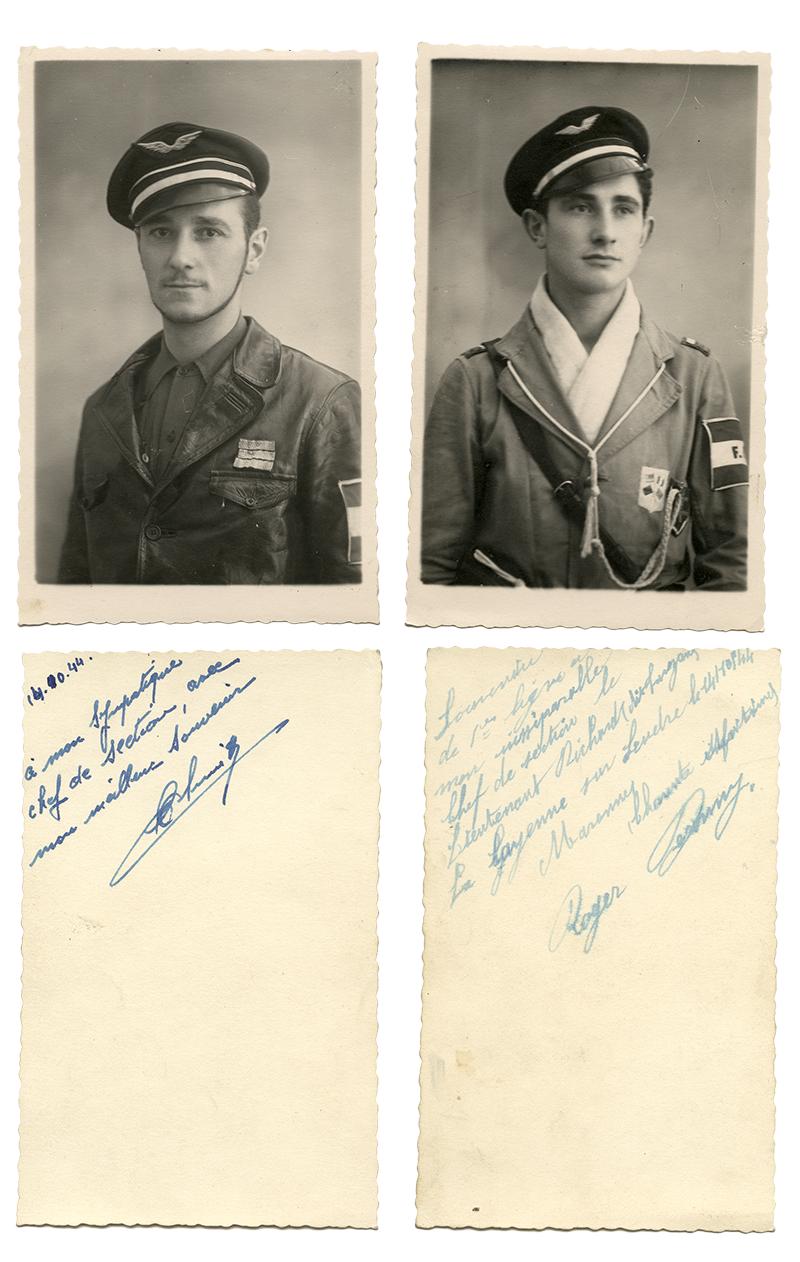Tarzan Suitcase
Toward the end of World War II, Albert Richard was the head of the “Tarzan” section of the French resistance group the Forces Françaises de l’Intérieur, or FFI. As regions of France were liberated, the FFI started becoming more formally organized into light infantry units and served as a valuable addition to the regular Free French forces. In this role, the FFI units manned the less active areas of the front lines, allowing the main French army units to mass their troops in decisive areas of the front. Eventually, from October 1944, with the major part of France liberated, the FFI units were amalgamated into the French army, continuing the fight on the Western Front. This marked the end of the undercover resistance movements of World War II.
Inside this suitcase are several objects belonging to Richard: letters, mainly to his mother and wife, pictures of him as a child, photographs of his family and wife, travels and ceremonies. There are also many objects belonging to his military life such as:
- pictures shot during, before and after the war, with his comrades in arms: in uniform, at work, and at leisure.
- a gold framed wooden picture (30,5 x 24,8 cm) depicting Richard and his peers in the Défense Contre l’Aviation, or DCA, a French anti-aviation squadron. The picture includes a handmade label in the shape of a French flag at the top right of the image, together with writings from the 401st DCA third group.
- a collage composed of five images of a girl doing a striptease, that progress from fully dressed to naked, glued above a French flag made of fabric, dimensions 21,8 x 18,6 cm.
- a “Carte d’officier de réserve” French official identification card that meant Richard could be called on for military service, even if retired.
- a handmade notebook containing documentation and souvenirs of France’s liberation from German occupation, dimension 17 x 22 cm. The notebook’s small-format pictures were sold for 1,5 francs, while the large-format images were 5 francs. The notebook contains black-and-white pictures of FFI liberation parades in small villages, the raising of the French flag, as well as memories of happy and relaxed moments celebrating the defeat of the enemy, such as recitals, plays or bathing in the lake. The end of the notebook includes a detailed list of requested images, the number of copies, and the places described.
- a collection of six black-and-white portraits of Tarzan-section fighters taken in October 1944. This collection is particularly interesting because it was forbidden to take part in any resistance force, therefore any evidence proving membership was extremely dangerous and could lead to arrest. In the portraits, the men are dressed as “official” soldiers, mixing military uniforms with patches from the Allies, air-force hats, the FFI or the Croix de la Lorraine, and so on. On the back of the pictures, inscriptions in French show the photographs were given to Richard by the soldier depicted in the image. All of them are signed. Inscriptions include: “October 14, 1944. To my dear section leader, with fondest memories;” or “October 19, 1944. Memory from the 1st line, to my inseparable section leader, Lieutenant Richard (known as Tarzan).”
Richard, also fought in the First Indochina War, which began in French Indochina on Dec. 19, 1946, and lasted through Aug. 1, 1954.

